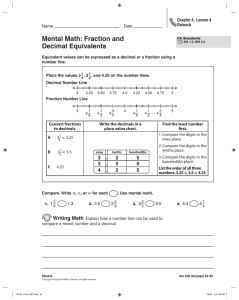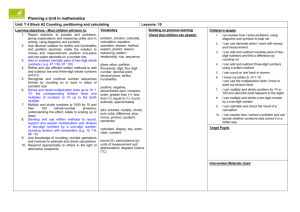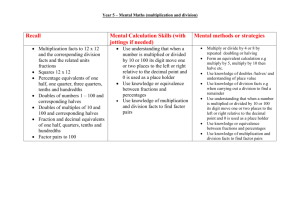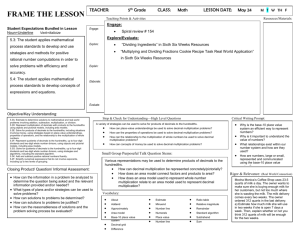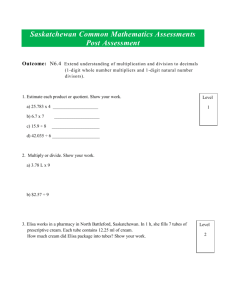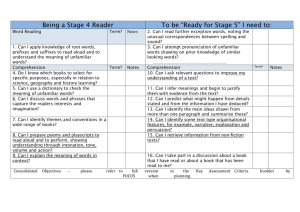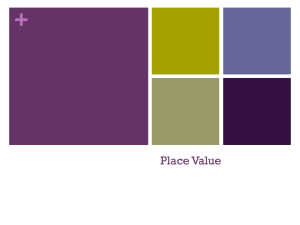Key vocabulary: As before & decimal places, decimal point, tenths
advertisement
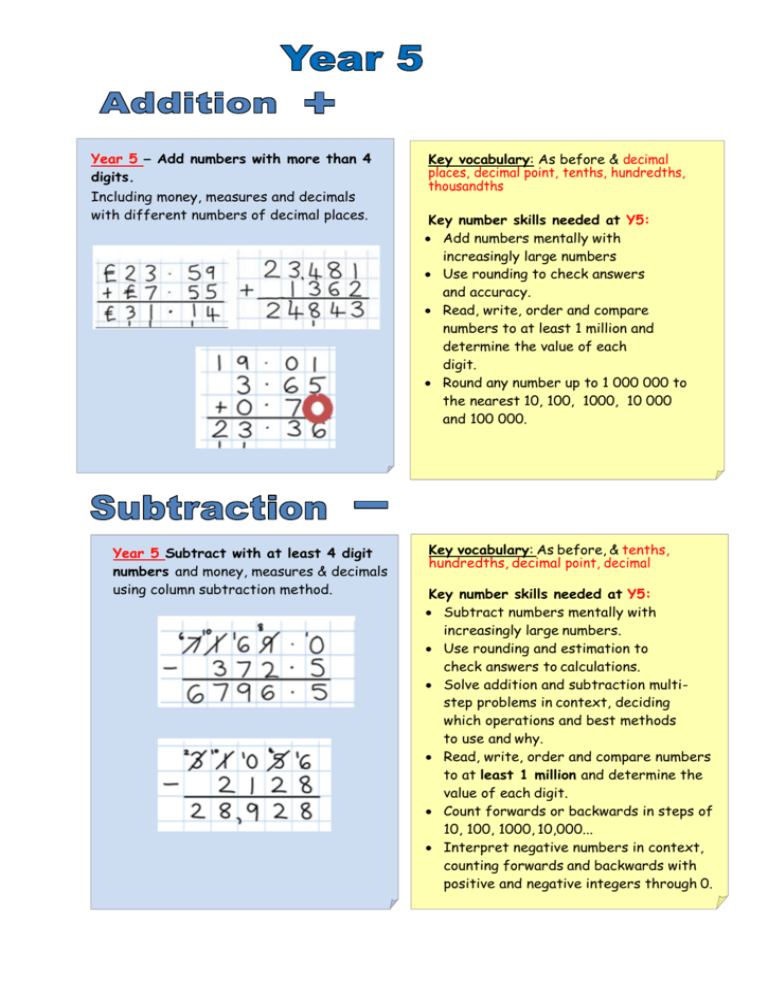
Year 5 – Add numbers with more than 4 digits. Including money, measures and decimals with different numbers of decimal places. Year 5 Subtract with at least 4 digit numbers and money, measures & decimals using column subtraction method. Key vocabulary: As before & decimal places, decimal point, tenths, hundredths, thousandths Key number skills needed at Y5: Add numbers mentally with increasingly large numbers Use rounding to check answers and accuracy. Read, write, order and compare numbers to at least 1 million and determine the value of each digit. Round any number up to 1 000 000 to the nearest 10, 100, 1000, 10 000 and 100 000. Key vocabulary: As before, & tenths, hundredths, decimal point, decimal Key number skills needed at Y5: Subtract numbers mentally with increasingly large numbers. Use rounding and estimation to check answers to calculations. Solve addition and subtraction multistep problems in context, deciding which operations and best methods to use and why. Read, write, order and compare numbers to at least 1 million and determine the value of each digit. Count forwards or backwards in steps of 10, 100, 1000, 10,000... Interpret negative numbers in context, counting forwards and backwards with positive and negative integers through 0. Year 5 Multiply up to 4 digits by 1 or 2 digits Key vocabulary As before, & cubed, integer, square, factor, integer, decimal, short/long multiplication, ‘carry’ Key skills for multiplication at Y5: Identify multiples and factors, using knowledge of multiplication tables to 12x12. Solve problems where larger numbers are decomposed into their factors Multiply and divide integers and decimals by 10, 100, 1000. Recognise and use square and cube numbers and their notation. Year 5 Divide up to 4 digits by a single digit, including those with remainders. Move from expanded long division to short division. e.g. 189 ÷ 8 = . Leading to Key vocabulary: As before & quotient, prime number, prime factors, composite number (non-prime) Key number skills needed at Y5: Recall multiplication / division facts for all numbers up to 12 x 12. Identify multiples and factors of any number. Multiply and divide whole numbers and those involving decimals by 10, 100 and 1000. Work out if numbers to 100 are prime, recalling primes to 19. Use multiplication and division as inverses. Express remainder answers as fractions, decimals or rounded numbers, as appropriate to the context of the problem.
